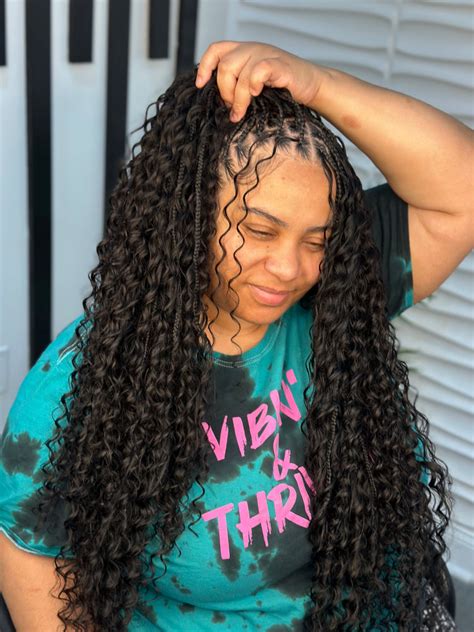Introduction
Human hair braids have been captivating fashion enthusiasts for centuries, adding a touch of elegance and individuality to any look. With advancements in hair technology, the availability of high-quality human hair extensions has opened up endless possibilities for creating stunning braids that seamlessly blend with your natural hair.

Types of Human Hair for Braiding
1. Remy Human Hair:
- Premium-quality hair that retains the cuticle layer, ensuring the strands flow in the same direction.
- Reduces tangling and matting, maintaining a natural, healthy appearance.
2. Non-Remy Human Hair:
- Hair collected from multiple donors, with cuticles removed or aligned in different directions.
- More affordable than Remy hair but may be prone to tangling and shedding.
3. Virgin Human Hair:
- Unprocessed and uncolored hair, retaining its natural pigment and texture.
- The most expensive option but offers exceptional durability and versatility.
Choosing the Right Hair for Your Braids
- Hair Texture: Match the texture of your natural hair to achieve a seamless blend.
- Hair Length: Determine the desired length of your braids and select hair extensions that complement your own hair length.
- Hair Color: Choose a shade that complements your skin tone and eye color.
- Hair Density: Consider the thickness of your own hair and select extensions that provide the fullness you desire.
Braiding Techniques for Human Hair
1. Cornrows:
- Traditional African braiding technique that involves tightly braiding hair in straight lines.
- Creates a raised effect that can add height and volume.
2. Box Braids:
- Similar to cornrows but with square-shaped sections.
- Offers a more modern and edgy look.
3. Fulani Braids:
- Originating from the Fulani people of West Africa.
- Features intricate braids adorned with beads and accessories.
4. Top Knot Braid:
- A statement braid that combines cornrows or box braids with a gathered knot on top.
- Creates a chic and sophisticated look.
Benefits of Human Hair Braids
1. Protective Style:
Braids shield your natural hair from environmental damage, reducing breakage and promoting healthy hair growth.
2. Versatile and Fashionable:
Braids offer endless styling possibilities, from sleek ponytails to intricate updos.
They complement a variety of outfits and occasions.
3. Low Maintenance:
Properly installed and maintained braids require minimal daily upkeep, saving you time and effort.
Common Mistakes to Avoid
1. Over-Braiding:
Excessive braiding can put undue stress on your hair and scalp, leading to breakage and hair loss.
2. Tight Braids:
Braids that are too tight can cause discomfort and scalp irritation.
Avoid excessive tension and opt for moderately tight braids.
3. Neglecting Scalp Care:
Regularly wash and moisturize your scalp beneath the braids to prevent buildup and maintain scalp health.
4. Using Harsh Products:
Avoid using harsh chemicals or heat styling tools on your braids to preserve their integrity.
FAQs
1. How long do human hair braids last?
Properly installed braids can last between 6-12 weeks, depending on maintenance and lifestyle factors.
2. Can I wash my human hair braids?
Yes, washing your braids regularly with a gentle shampoo and conditioner is essential for scalp health and braid longevity.
3. How often should I re-braid my hair?
Re-braiding every 4-6 weeks is recommended to maintain the tightness of the braids and prevent any loosening or damage.
4. Why are human hair braids more expensive than synthetic braids?
Human hair braids are more expensive due to their high quality, durability, and versatility. They offer a natural-looking blend with your own hair and can be styled in various ways.
Conclusion
Embracing human hair braids is a transformative experience that empowers you to express your individuality and enhance your personal style.
By choosing the right hair, following proper braiding techniques, and avoiding common pitfalls, you can achieve stunning braids that complement your natural beauty and turn heads wherever you go.
